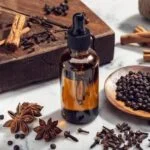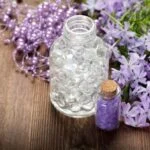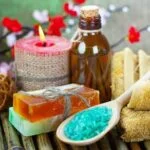Aromatherapy has long been known for its soothing and healing properties, but what exactly is an aromatherapy massage? This unique form of massage combines the benefits of therapeutic touch with the use of essential oils extracted from plants to enhance both physical and mental well-being. The practice dates back centuries and has evolved into a popular technique that is widely used in spas and wellness centers around the world.
The history of aromatherapy can be traced back to ancient civilizations where plant extracts were used for their medicinal properties. Over time, the use of essential oils in massages became more refined, leading to the development of aromatherapy as a holistic therapy method. Today, aromatherapy massage is recognized for its ability to promote relaxation, reduce stress, alleviate muscle tension, and improve overall health.
So, what exactly is an aromatherapy massage? Unlike traditional massages that primarily focus on muscle manipulation and relaxation techniques, aromatherapy massages incorporate the use of essential oils to enhance the therapeutic effects of the massage. These oils are carefully selected based on their specific healing properties and are applied to the skin or inhaled during the massage session. The combination of touch therapy and aromatic scents creates a truly immersive experience that targets both physical and emotional well-being.
History of Aromatherapy
The history of aromatherapy dates back thousands of years and is deeply rooted in ancient civilizations such as Egypt, China, and Greece. These early cultures recognized the therapeutic properties of aromatic plants and incorporated them into healing practices. In Egypt, essential oils were used in the embalming process, showcasing their preservation and aromatic qualities. The Greeks and Romans also valued the use of scented oils for medicinal purposes and bathing rituals.
Fast forward to the 20th century when a French chemist named René-Maurice Gattefossé coined the term “aromatherapy” after accidentally discovering the healing properties of lavender oil on burns. This pivotal moment marked the beginning of modern aromatherapy as we know it today. Gattefossé’s research paved the way for further scientific exploration into the benefits of essential oils on physical and mental well-being.
As aromatherapy gained popularity over time, it eventually evolved into a specialized massage technique known as an aromatherapy massage. This type of massage combines the benefits of touch therapy with the therapeutic properties of essential oils to promote relaxation, alleviate stress, and enhance overall health. By incorporating specific essential oils into a massage session, individuals can experience both physical relief from muscle tension and emotional relaxation from inhaling the pleasant aromas.
What Is Aromatherapy Massage
Aromatherapy massage is a specialized form of massage therapy that combines the benefits of regular massage with the use of essential oils to enhance both physical and mental well-being. During an aromatherapy massage, the therapist will typically dilute essential oils in a carrier oil and apply them to your skin through gentle strokes and pressure. The aroma of these essential oils is thought to promote relaxation, reduce stress, and alleviate various ailments.
When compared to traditional massages, where techniques such as Swedish or deep tissue massage are commonly used, aromatherapy massage focuses not only on manipulating muscles but also on stimulating the olfactory system through the inhalation of essential oils. This combination of touch and scent allows for a more holistic approach to healing and relaxation. Aromatherapy massage can be tailored to address specific concerns, such as muscle tension, anxiety, insomnia, or even digestive issues.
- Aromatherapy massages are often more relaxing and soothing than traditional massages due to the calming effects of essential oils
- The use of aromatherapy in massage therapy can help improve mood and emotional well-being
- Essential oils used in aromatherapy massages can have therapeutic properties that complement the physical benefits of the massage itself
In essence, an aromatherapy massage provides a multi-sensory experience that targets both the body and mind for overall wellness. By incorporating essential oils into a massage session, individuals can reap the benefits of relaxation, stress relief, improved circulation, reduced inflammation, and enhanced emotional balance – making it a popular choice for those seeking a holistic approach to self-care.
Benefits of Aromatherapy Massage
Aromatherapy massage offers a unique blend of rejuvenation for the body and mind, combining the benefits of traditional massage therapy with the soothing properties of essential oils. One of the main advantages of an aromatherapy massage is its ability to promote relaxation and reduce stress.
The gentle pressure applied during the massage helps release tension in muscles, while the aromatic essential oils work their magic on your senses, creating a calming and peaceful environment. This combination can help alleviate anxiety, improve sleep quality, and enhance overall emotional well-being.
In addition to its mental health benefits, aromatherapy massage can also have several physical advantages. The use of essential oils like lavender, eucalyptus, or peppermint can help relieve muscle pain and inflammation. These oils are known for their analgesic and anti-inflammatory properties, making them well-suited for addressing ailments such as headaches, sore muscles, or joint pain. Moreover, the increased circulation from the massage techniques can aid in detoxification and improve skin condition by promoting cell regeneration.
Aromatherapy massages can also have a positive impact on one’s respiratory system. Inhalation of essential oils during the massage session can help clear congestion, promote easier breathing, and boost overall respiratory health. Oils like eucalyptus or tea tree are excellent choices for enhancing respiratory function due to their decongestant and antimicrobial properties. Overall, an aromatherapy massage provides a holistic approach to wellness by addressing both physical discomforts and mental stresses with a soothing touch and fragrant essence.
| Physical Benefits | Mental Benefits |
|---|---|
| Relieves muscle pain and inflammation | Promotes relaxation and reduces stress |
| Improves skin condition through circulation | Alleviates anxiety and enhances emotional well-being |
| Aids in detoxification process | Improves sleep quality |
Essential Oils Used
Aromatherapy massage utilizes the power of essential oils to enhance the overall experience and benefits of the massage. The selection of essential oils is crucial as each oil offers unique properties that can address specific concerns or promote certain effects on the body and mind. Here are some of the most commonly used essential oils in aromatherapy massages and their individual benefits:
- Lavender: Known for its calming and soothing properties, lavender essential oil is often used to reduce stress, anxiety, and promote relaxation during a massage.
- Peppermint: With its invigorating and cooling effect, peppermint essential oil is great for relieving muscle tension, headaches, and boosting energy levels.
- Lemon: Lemon essential oil is commonly used for its uplifting and cleansing properties, making it a popular choice to refresh the mind and improve mood during a massage.
These essential oils can be used individually or blended together to create a personalized aromatherapy experience tailored to your needs and preferences. It’s important to consult with a trained aromatherapist or massage therapist to ensure the safe and effective use of these essential oils during your massage session.
Using the right combination of essential oils in an aromatherapy massage can enhance not only the physical benefits but also the emotional well-being of the individual receiving the treatment. Whether you are looking to relax, rejuvenate, or simply enjoy a sensory experience, incorporating these essential oils into your massage session can amplify the overall therapeutic effects.
So next time you book an aromatherapy massage, discuss with your therapist which essential oils may best suit your needs for that extra touch of luxury and wellness.
Techniques Used
Aromatherapy massages combine the benefits of massage therapy with the healing properties of essential oils, resulting in a holistic approach to relaxation and well-being. The techniques used in aromatherapy massages are specifically designed to enhance the overall experience and effectiveness of the treatment. In these massages, therapists incorporate a variety of movements to promote relaxation, relieve tension, and stimulate the senses.
Effleurage
Effleurage is a gentle, flowing stroke used at the beginning and end of an aromatherapy massage session. This technique involves long, smooth strokes that glide over the skin using light to moderate pressure. Effleurage helps warm up the muscles, improve circulation, and prepare the body for deeper massage techniques. It is soothing and calming, making it an ideal way to start the massage process while spreading essential oils evenly across the skin.
Petrissage
Petrissage is a kneading motion that involves applying firm pressure to specific points on the body. This technique targets muscle knots and areas of tension, helping to break down adhesions and release toxins trapped in the muscles. By manipulating soft tissue during petrissage, therapists can increase blood flow, reduce inflammation, and promote overall relaxation. Petrissage is often used in conjunction with effleurage to create a balanced and effective aromatherapy massage experience.
Tapotement
Tapotement is a percussive technique that involves rhythmic tapping or pounding motions applied to various parts of the body. This dynamic movement stimulates nerve endings, invigorates muscles, and enhances circulation. Tapotement can help energize the body, promote lymphatic drainage, and provide a sense of rejuvenation. While not as commonly used as effleurage or petrissage in aromatherapy massages, tapotement adds a unique element to the treatment by introducing faster-paced movements for increased stimulation.
Precautions and Considerations
Skin Sensitivities
Before getting an aromatherapy massage, it is important to consider any skin sensitivities or allergies that you may have. Essential oils used in aromatherapy massages are highly concentrated and can cause adverse reactions in some individuals.
It is advisable to do a patch test on a small area of skin before your massage session to ensure that you don’t experience any negative reactions. If you have sensitive skin or known allergies, make sure to inform your massage therapist so they can adjust the oils used accordingly.
Medical Conditions
Individuals with certain medical conditions should take special precautions before receiving an aromatherapy massage. For example, pregnant women should consult with their healthcare provider before undergoing any type of massage therapy, including aromatherapy massages. People with certain health conditions such as high blood pressure, diabetes, or epilepsy should also seek guidance from their healthcare provider before booking an aromatherapy massage session. It is always better to err on the side of caution and prioritize your health and well-being.
Consultation With a Professional
It is recommended to schedule a consultation with a certified aromatherapist or a trained massage therapist specializing in aromatherapy before getting an aromatherapy massage. During this consultation, you can discuss your specific concerns, goals for the massage session, and any health considerations that need to be addressed.
A professional will be able to tailor the essential oils used and the techniques applied during the massage based on your individual needs and preferences. This personalized approach ensures that you receive the maximum benefits from your aromatherapy massage while minimizing any potential risks.
How to Prepare for an Aromatherapy Massage
An aromatherapy massage can be a rejuvenating and relaxing experience that not only soothes your muscles but also calms your mind. To make the most out of your aromatherapy massage session, it is essential to prepare properly beforehand.
One key aspect of preparing for an aromatherapy massage is selecting the right essential oils that cater to your specific needs and preferences. Different essential oils have unique properties that can help with various issues such as stress relief, muscle tension, or sleep improvement.
Another important tip for preparing for an aromatherapy massage is to communicate effectively with your massage therapist. Let them know about any medical conditions, allergies, or preferences you may have to ensure a safe and enjoyable experience. Additionally, discussing your goals for the session – whether it is relaxation, pain relief, or mood enhancement – can help the therapist tailor the treatment specifically to your needs.
Creating a soothing ambiance in the massage room can enhance the overall experience of an aromatherapy massage. Consider bringing calming music or sounds to set the mood, and perhaps even dimming the lights to create a peaceful atmosphere.
Relaxing before the session by taking some deep breaths or practicing mindfulness can also help you get into a serene state of mind before the massage begins. By following these tips and preparing thoughtfully for your aromatherapy massage session, you can maximize its benefits and truly enjoy a therapeutic and rejuvenating experience.
Conclusion
In conclusion, after delving into the fascinating world of aromatherapy massages, it is evident that this holistic approach to wellness offers a multitude of benefits for both the body and mind. Aromatherapy massages combine the healing powers of touch therapy with the aromatic properties of essential oils to create a truly rejuvenating experience.
By incorporating various massage techniques like effleurage and petrissage along with carefully selected essential oils, individuals can experience relief from physical ailments such as muscle tension, as well as find mental relaxation and emotional balance.
One of the key takeaways from exploring what an aromatherapy massage entails is the emphasis on self-care and overall well-being. In today’s fast-paced world filled with stress and deadlines, it is crucial to prioritize self-care rituals that promote relaxation and inner peace.
Aromatherapy massages offer not only a moment of tranquility but also serve as a reminder to take time for oneself amidst life’s demands. The synergy between the calming scents of essential oils and the therapeutic touch of massage creates a harmonious environment where one can truly unwind and reconnect with themselves.
As individuals continue to seek out natural remedies for their health and wellness needs, aromatherapy massages have emerged as a popular choice due to their gentle yet effective approach. By understanding the history, benefits, essential oils used, techniques employed, precautions to consider, and tips for preparation, anyone can embark on their own journey towards better self-care through aromatherapy massages.
So next time you are looking for a way to relax, destress, or simply indulge in some pampering, consider booking an aromatherapy massage session to reap all its wonderful benefits for your body and soul.
Frequently Asked Questions
What Happens at an Aromatherapy Massage?
During an aromatherapy massage, essential oils are used in combination with traditional massage techniques. These oils are chosen based on the client’s needs and preferences, enhancing the overall therapeutic experience of the massage.
What Is the Difference Between a Normal Massage and an Aromatherapy Massage?
The main difference between a normal massage and an aromatherapy massage is the use of essential oils. While a traditional massage focuses on manipulating the body’s muscles and tissues to relieve tension, an aromatherapy massage also incorporates the healing properties of different essential oils to promote relaxation, improve mood, and alleviate specific ailments.
Is Aromatherapy Massage a Full Body Massage?
Aromatherapy massages can be customized to focus on specific areas of the body or provide a full-body experience. Depending on your preferences and needs, the massage therapist can adjust the technique and pressure accordingly to ensure that all parts of your body receive the benefits of both the massage and essential oils.

Are you looking for a natural way to improve your health and wellbeing?
If so, aromatherapy may be the answer for you.





